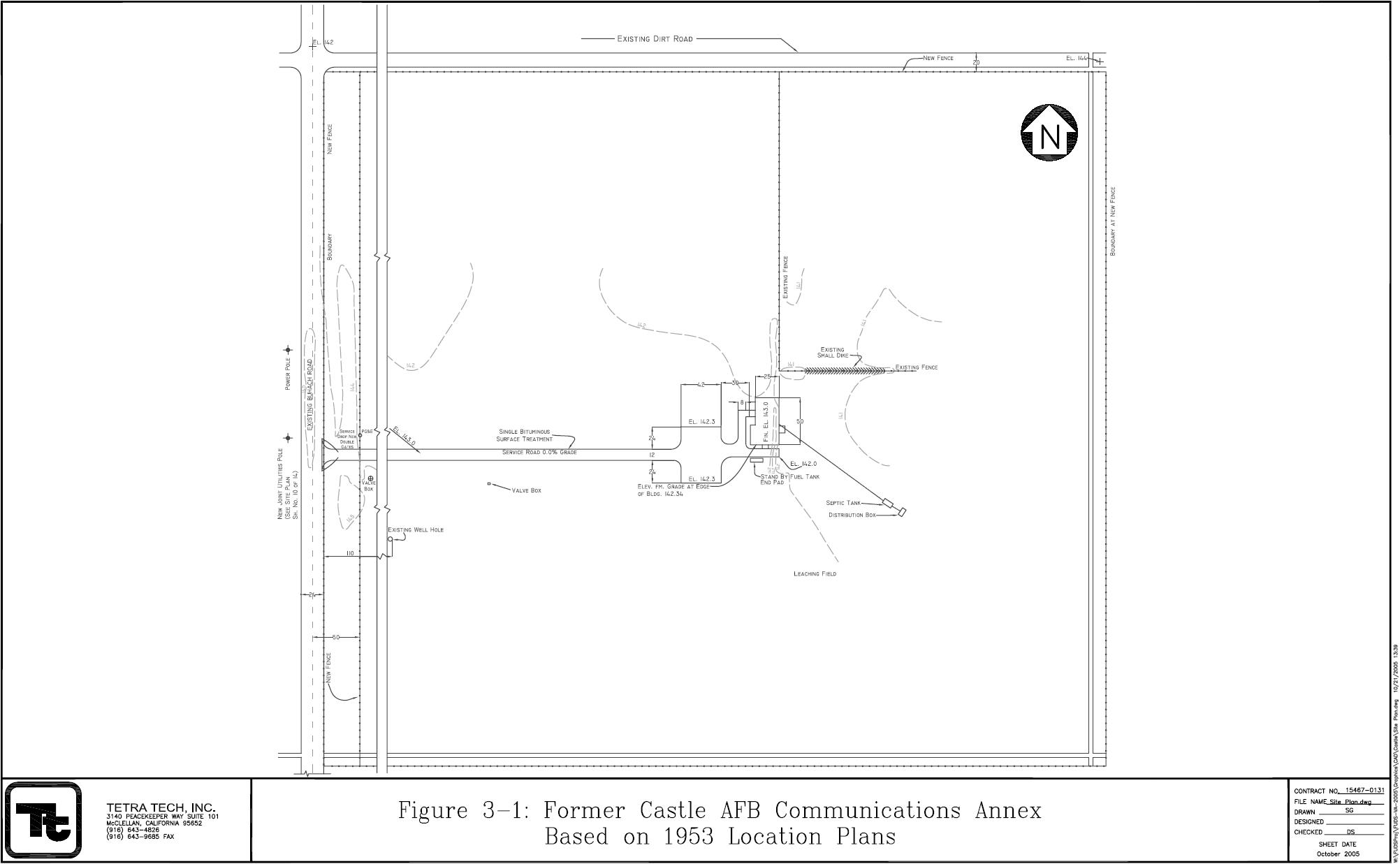
As with most communications annexes, their operational histories were so intertwined with their parent base, that the history of, in this case, Castle AFB, must be incorporated into their operational history.
The main operation former Castle AFB Communications Annex was to send, receive, and relay radio signals to augment the Castle Air Force Base communications system from 1953 to 1972. In 1953 two lots located approximately four miles south of Castle AFB, containing a total of 40 acres, were purchased from Mr. Richard Nahas. One concrete building was built that housed the radio equipment, back up generator, and crew quarters. Another structure of corrugated metal was erected over the well that supplied the Site with water.
Additional construction included several
wooden telephone poles from which to string the actual antennas
and a six foot chain link fence around the perimeter to secure
the Site.
In the 1950's Castle AFB was at the forefront of the Strategic
Air Command's (SAC) (now Air Combat Command) modernization plans
when its 93rd Bombardment Wing (Heavy) was the first operational
unit to receive the B-52B "Stratofortress" nuclear capable
heavy bomber.
Castle AFB's bombardment squadrons continued to operate the B-52B, and later the B-52H, in the nuclear deterrent role for the remainder of its Air Force existence. Castle's bombers and tankers were constantly drilled throughout the Cold War. No-notice drills with nuclear armed bombers were a way of life at Castle. Aircrews didn't know if they were leaving for a drill or going to an enemy nation to deliver a nuclear payload until a recall message was received telling them to return to base. With this in mind, the Castle AFB Communication Annex was an integral link in the SAC's readiness posture. A communication failure during operational readiness exercise involving actual nuclear weapons could have had catastrophic consequences.
Radio receiver-transmitter facilities such as Castle AFB Communications Annex were used for communications between other U.S. Air Force bases and aircraft. General radio traffic between bases in the same command and other DoD facilities were routinely relayed through the offsite annexes. Offsite annexes were beneficial for a few reasons. In order to transmit and receive radio traffic over large distances, directional antennas and large broadcast wattages are needed. Directional antennas are made to specific dimensions, particular to the frequency used and the direction of broadcast, to increase the range of transmission. These antennas must be situated facing the intended target (line of communication) in order to send or receive a clear signal. A separate directional antenna was needed for each individual line of communication. An offsite location ensured that sufficient area was available for the construction without removing existing onsite infrastructure. Another benefit of offsite annexes over onsite annexes was reduced radio interference. The high wattage used to push these signals over the distances needed would spill over and interrupt other base communications mediums. Telephones and hand held radios were used by base security forces, and the signals to aircraft would be affected.
As communications technology improved, systems like Castle Communications Annex were phased out. The property was deemed surplus on 5 September 1972. The General Services Administration made the property available to the County of Merced for use as a public park or recreation area. The County of Merced took possession of the property through quitclaim deed on 24 July 1973. As the County of Merced lacked the funds and resources to develop the property, it was made available to the McSwain Union Elementary School District. The School District took possession of Parcel 2, the 15 acre parcel, in 1997 and Parcel 1, the 25 acre parcel in 2000 through quitclaim deeds. The Site is currently fenced off and unused.
